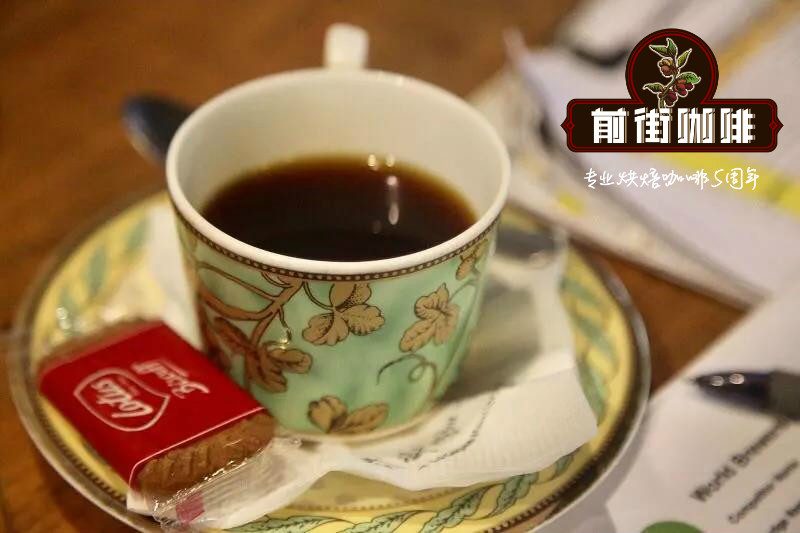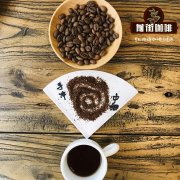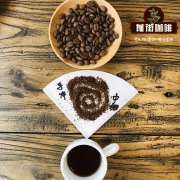A bean with a strong smell of red wine-the Costa Rican sun

Professional coffee knowledge exchange more coffee bean information please follow the coffee workshop (Wechat official account cafe_style)
The coffee industry in Costa Rica has developed since the middle of the 18th century. It is the country where coffee was first introduced into Central America and has a long history. Therefore, the coffee organization is equipped with a complete production and marketing system. Costa Rican coffee has always been recognized by the world in terms of quality and quantity, and has been rated as the world-class high-quality coffee.
Costa Rica has eight major coffee producing areas, namely, the Western Valley West Valley, the Central Valley Central Valley, Tarazu Tarrazu, Sanhe Tres Rios, Eurosci Orosi, Brenka Brunca, Duli Alba Turrialba, Guanacaster Guanacaste. Tarrazu is one of the main coffee producers here.
Tarazhu is located in the fertile volcanic region of Central America, which has a humid climate and fertile volcanic soil, abundant rainfall throughout the year, high altitude, and dense forest natural shade, providing a unique growth environment for coffee growth. Nearly 95% of the coffee beans produced in Tarazhu Alpine are very hard beans (SHB), which generally grow above 1500 meters above sea level.
The Pillon processing plant is located in the famous Tarazu region of Costa Rica, located on the border of the town of Leon Cortez, owned by Edgar Urena and Efrain Mendez, with a total production capacity of more than 100 bags.
The treatment plant is Costa Rica, the first government-approved all-day treatment plant, a very rare natural sun treatment, showing a strong nutty chocolate and tropical honey apple aroma, showing an excellent natural flavor. The blue jeep logo on the sack is their means of transporting coffee.
Unlike the common honey treatment in Costa Rica, this bean from the Pillon processing plant is a rare sun treatment.
At an altitude of 1700 meters above sea level, the coffee is dried in a high African bed, which is laborious and time-consuming. The "slow sun for 28 days" is used to flip the coffee beans in turn every day, so that they have uniform sun time to avoid mildew. At the same time, it also makes their coffee have clean and sufficient sweetness and fruit flavor.
Kaddura species (Caturra) is a mutant of Bourbon, which was first found in Brazil. The palate is sour with lemon or citrus flavors and fruity in sweetness. although it is not as sweet as Typica and bourbon, it can perform very well with proper baking. Kaddura's sweetness is determined by the number and dose of fertilizer applied by the grower, and the harvest period takes 2 years and the care cost is high, so the yield is still limited.
Raw beans look yellowish green and are typical of sun-dried beans with strong aromas of ripe fruit and fermented fruit.
This bean belongs to SHB extremely hard beans, hard beans, medium moisture content, yellowing point in 5 minutes 15 seconds, 8 minutes 30 seconds into an explosion, an explosion after the development of 2 minutes before baking.
Roaster Yangjia 800N semi-direct fire (baking capacity 300g)
The furnace temperature is preheated to 200℃ into the pot, the throttle is opened at 3j30s and fired, the firepower is adjusted to 160,the throttle is opened to 3, the temperature recovery point is 1`34``, the firepower is kept unchanged at 140℃, and the throttle is opened to 4. 5`15` turned yellow, the smell of grass disappeared, entered the dehydration stage, the firepower was reduced to 130, and the throttle remained 4. Adjust the firepower to 100 at 180 ℃, the throttle will not change.
After dehydration, the bean surface appears wrinkles and black markings, and the taste of toast changes to coffee, which is a prelude to an explosion. Pay attention to the sound of an explosion. When it starts to explode at 830`, the throttle is all open for 5, and the firepower is adjusted to 80 at the same time. After an explosion, the development time is 2 minutes, and put into the pot at 194 ℃.
When the cup was tested, the aroma of fermented wine was very strong, and when it was baked for a week, it was also a strong aroma of red wine, and the flavor of fermentation was too strong to cover up other flavors, so we decided to keep it again for another week. that is, half a month after baking, the strong aroma of red wine still exists, but there are some sour notes of oranges and berries. Therefore, it is recommended to raise beans for about half a month before drinking, so that you can feel more flavor.
The hand rushes out and smells like a strong red wine fermented aroma, with nectarines, berries, oranges and red berries in the mouth, with an obvious red wine finish and a hint of sucrose.
Important Notice :
前街咖啡 FrontStreet Coffee has moved to new addredd:
FrontStreet Coffee Address: 315,Donghua East Road,GuangZhou
Tel:020 38364473
- Prev

One of the most expensive coffee on the market in KONA-, Hawaii, second only to Blue Mountain in price
Professional coffee knowledge exchange more coffee bean information please pay attention to the coffee workshop (Wechat official account cafe_style) KONA is produced in Hawaii, the largest island of Hawaii, located in the 4200-meter-high Mauna Kea Shanxi side of the hillside of the KONA area, the tropical rain forest climate is very rich in annual rainfall, coffee trees planted on the black gravel of volcanic rock, the local natural environment is similar
- Next

Kenya Asali AA TOP exquisite 72 hours washing
For more information on coffee beans, please pay attention to the coffee workshop (Wechat official account cafe_style). There is no country in the world that attaches so much importance to producing high-quality coffee, so Ken can be regarded as the best model for coffee manufacturers in the world, because all coffee must be handed over to the Coffee Board established by the government after collection.
Related
- Detailed explanation of Jadeite planting Land in Panamanian Jadeite Manor introduction to the grading system of Jadeite competitive bidding, Red bid, Green bid and Rose Summer
- Story of Coffee planting in Brenka region of Costa Rica Stonehenge Manor anaerobic heavy honey treatment of flavor mouth
- What's on the barrel of Blue Mountain Coffee beans?
- Can American coffee also pull flowers? How to use hot American style to pull out a good-looking pattern?
- Can you make a cold extract with coffee beans? What is the right proportion for cold-extracted coffee formula?
- Indonesian PWN Gold Mandrine Coffee Origin Features Flavor How to Chong? Mandolin coffee is American.
- A brief introduction to the flavor characteristics of Brazilian yellow bourbon coffee beans
- What is the effect of different water quality on the flavor of cold-extracted coffee? What kind of water is best for brewing coffee?
- Why do you think of Rose Summer whenever you mention Panamanian coffee?
- Introduction to the characteristics of authentic blue mountain coffee bean producing areas? What is the CIB Coffee Authority in Jamaica?

